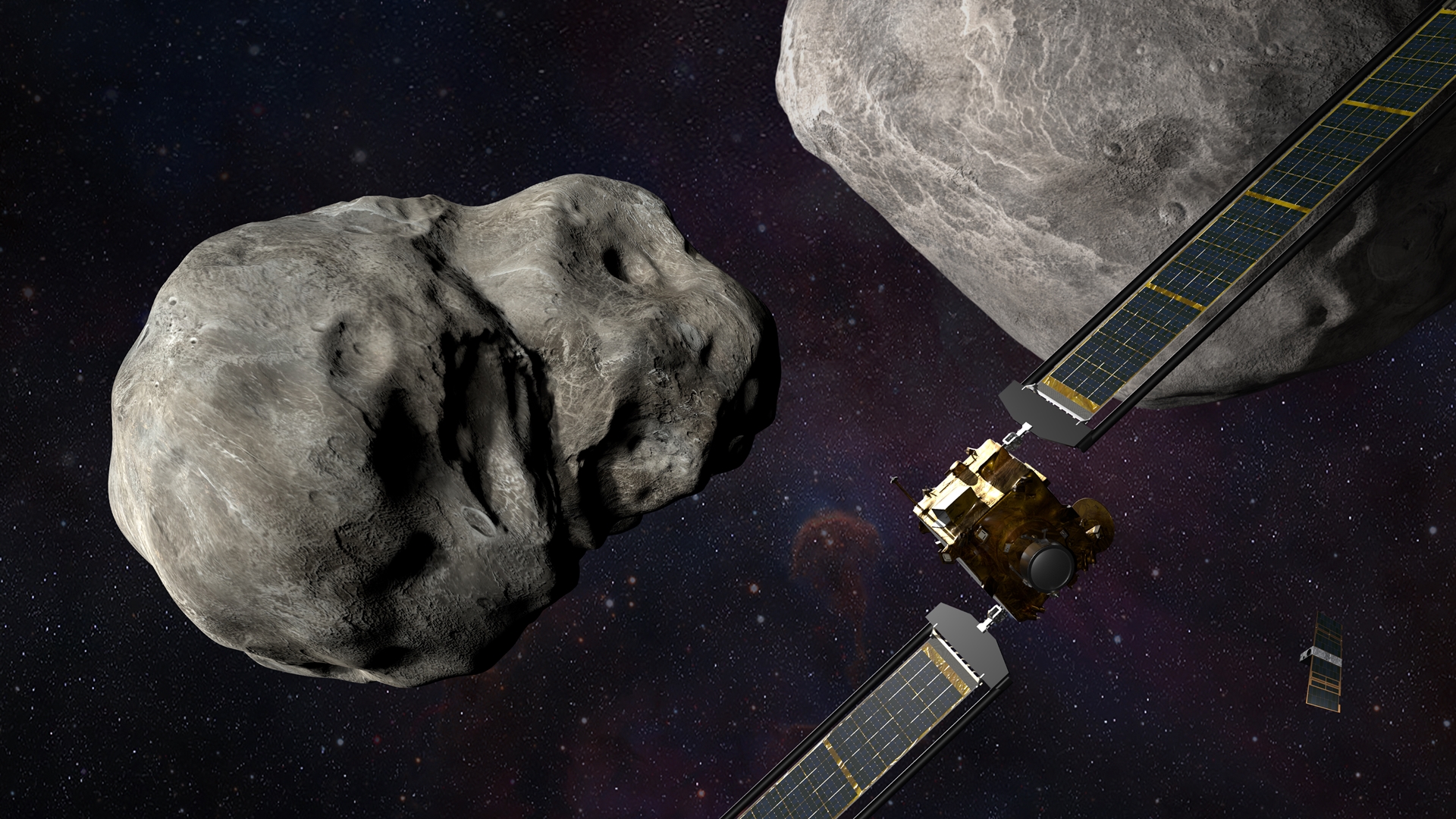- Observations made using the Hubble Space Telescope reveal a trail of boulders forming behind the Dimorphos asteroid.
- The boulders measure up to 6m across and are thought to have been shaken loose during the DART mission last year.
- Astronomers hope to study the boulders when the ESA’s Hera mission arrives at the binary asteroid in 2026.
Last year NASA conducted its Double Asteroid Redirection Test (DART) in which – to put it plainly – slammed a box into an asteroid to see if the impact would redirect the asteroid.
The test was done to see whether changing the course of an asteroid was at all possible. The results from the test were better than NASA could’ve hoped for with the orbit of Dimorphos around Didymos slowing by 32 minutes.
Since the impact astronomers have been observing the asteroid and have now said that they have spotted a swarm of boulders up to 6m across thanks to the Hubble Space Telescope. The boulders are drifting away from Dimorphos at “roughly the walking speed of a giant tortoise” and are thought to have been shaken loose from last year’s impact rather than being from the impact itself.
“This is a spectacular observation – much better than I expected. We see a cloud of boulders carrying mass and energy away from the impact target. The numbers, sizes, and shapes of the boulders are consistent with them having been knocked off the surface of Dimorphos by the impact,” David Jewitt of the University of California at Los Angeles who has been tracking the changes to Dimorphos said.
There are as many as 37 boulders trailing behind the asteroid which Jewitt estimates accounts for two percent of the boulders on the surface and 0.1 percent of the mass of the asteroid.
“If we follow the boulders in future Hubble observations, then we may have enough data to pin down the boulders’ precise trajectories. And then we’ll see in which directions they were launched from the surface,” Jewitt adds.
These sorts of observations are important, especially if a similar technique is used to protect Earth from a potential asteroid impact in future.
Further observations will be carried out when the European Space Agency’s Hera mission arrives at the binary asteroid in 2026. Once it arrives it will be used to perform a detailed post-impact survey of the DART mission.
“The boulder cloud will still be dispersing when Hera arrives. It’s like a very slowly expanding swarm of bees that eventually will spread along the binary pair’s orbit around the Sun,” added Jewitt.

